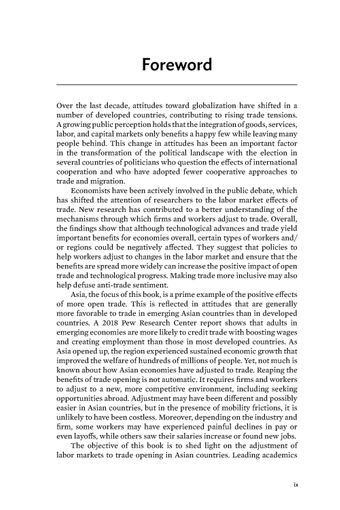Trade Adjustment in Asia
Past Experiences and Lessons Learned

Asia’s economic success over the past four decades has been built on a strategy of export promotion coupled with trade opening. Poverty rates throughout the region have fallen dramatically, especially in countries that have succeeded in integrating into regional or global value chains. However, this economic success has been accompanied by structural changes, such as the need for workers to change roles, sectors, and sometimes regions. Faced with increased foreign competition, firms have been forced to reorganize and quickly adopt new technologies. Despite the importance of this adjustment process, relatively little empirical evidence exists. This volume aims to close this gap by providing new insights into how Asia’s labor markets and firms have adjusted to trade opening. Written by leading trade economists with expertise in the region, the publication shows that trade opening has led to a more efficient allocation of capital and labor, but this has been accompanied by significant adjustment costs. The book sheds light on the effects of trade on workers and firms, with the aim of improving understanding of the adjustment process and contributing to the debate on how to make globalization work for all.



